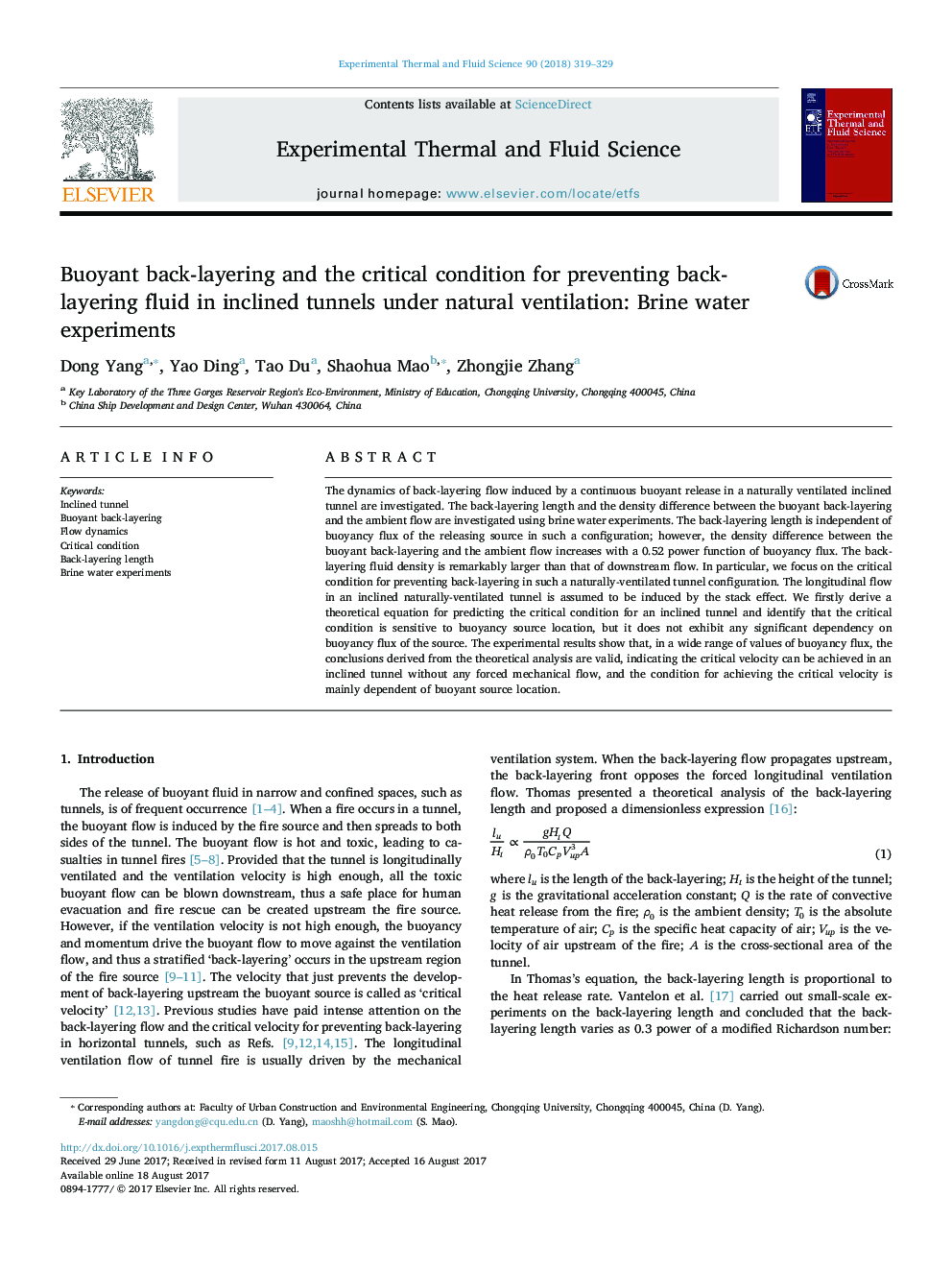| Article ID | Journal | Published Year | Pages | File Type |
|---|---|---|---|---|
| 4992445 | Experimental Thermal and Fluid Science | 2018 | 11 Pages |
Abstract
The dynamics of back-layering flow induced by a continuous buoyant release in a naturally ventilated inclined tunnel are investigated. The back-layering length and the density difference between the buoyant back-layering and the ambient flow are investigated using brine water experiments. The back-layering length is independent of buoyancy flux of the releasing source in such a configuration; however, the density difference between the buoyant back-layering and the ambient flow increases with a 0.52 power function of buoyancy flux. The back-layering fluid density is remarkably larger than that of downstream flow. In particular, we focus on the critical condition for preventing back-layering in such a naturally-ventilated tunnel configuration. The longitudinal flow in an inclined naturally-ventilated tunnel is assumed to be induced by the stack effect. We firstly derive a theoretical equation for predicting the critical condition for an inclined tunnel and identify that the critical condition is sensitive to buoyancy source location, but it does not exhibit any significant dependency on buoyancy flux of the source. The experimental results show that, in a wide range of values of buoyancy flux, the conclusions derived from the theoretical analysis are valid, indicating the critical velocity can be achieved in an inclined tunnel without any forced mechanical flow, and the condition for achieving the critical velocity is mainly dependent of buoyant source location.
Related Topics
Physical Sciences and Engineering
Chemical Engineering
Fluid Flow and Transfer Processes
Authors
Dong Yang, Yao Ding, Tao Du, Shaohua Mao, Zhongjie Zhang,
